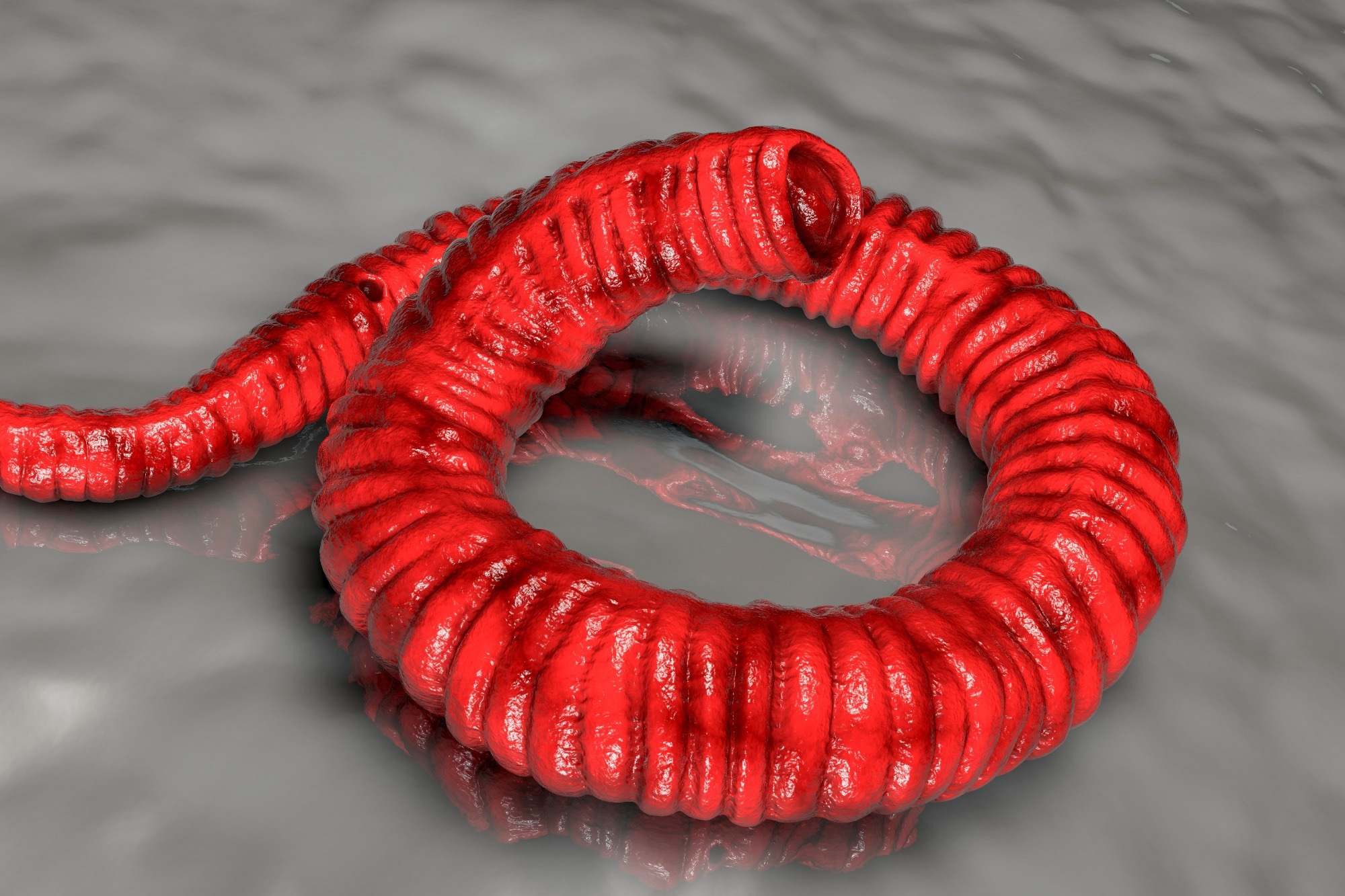In a recent report published in the journal Morbidity and Mortality Weekly Report (MMWR), researchers summarise the Centers for Disease Control and Prevention's (CDC's) progress toward globally eradicating dracunculiasis. The colloquially named 'guinea worm infection' is a little-known yet severe water-borne infection endemic to many parts of Asia and Africa. This report highlights previously unknown statistics from January to June 2023 and discusses pending regions and interventions needed to completely eliminate the hitherto untreatable disease.
 Progress Toward Eradication of Dracunculiasis — Worldwide, January 2022–June 2023. Image Credit: Kateryna Kon / Shutterstock
Progress Toward Eradication of Dracunculiasis — Worldwide, January 2022–June 2023. Image Credit: Kateryna Kon / Shutterstock
What is guinea worm disease?
Guinea worm disease, medically termed 'dracunculiasis,' is a parasite infection caused by parasitic larvae of the nematode Dracunculus medinensis. The parasite follows an elaborate, multi-host lifecycle, with mammals representing the final host. Larvae are found in freshwater reservoirs, where they are consumed by minuscule crustaceans called (water fleas). The larvae (L1) undergo two molting stages within the copepod in the span of 12-14 days. When a mammalian host ingests the infected copepod through unfiltered consumption of this water, the digestive acids of the mammal dissolve the copepod, releasing the larvae, which migrate to the walls of the intestine, abdominal cavity, and retroperitoneal space.
Larval metamorphosis into adults takes approximately one year to complete, following which the emergent adults mate within the host, males die, and females migrate and subsequently emerge from the host's skin. This emergence is a prolonged, debilitating, and excruciatingly painful process, taking three to 10 weeks to complete. When the host places the area of emergence in a water body in an attempt to suppress the pain, the female releases thousands of eggs into the water, and the cycle repeats.
In humans, guinea work disease presents a rarely deadly (mortality rate ~1%) yet severely painful and disability-inducing infection for which no vaccine or therapeutic intervention currently exists. If the site of worm emergence is left untreated, secondary bacterial infections often occur, with potentially lethal consequences. Unfortunately, the disease is prevalent in poor regions of Asia and Africa, generally devoid of adequate medical facilities required to speed up the emergence process (the only possible treatment involves forcibly pulling the female worm out of the host's skin) or treating the secondary infection.
What has been done to prevent the disease?
The disease presented an alarming risk to global human health. As of 1986, 3.5 million individuals across 20 Asian and African nations were reported to be suffering from the condition, coaxing the World Health Organization's (WHO's) World Health Assembly to initiate worldwide eradication efforts with the United States (US) Centers for Disease Control and Prevention (CDC) designated the 'Dracunculiasis Eradication Program's' technical monitor.
Disease eradication involves identifying and diagnosing affected individuals during the year-long incubation period, preventing their contact with water bodies, providing symptomatic treatment during the emergence stage, and providing underprivileged communities safe drinking water.
Have eradication efforts worked?
Spearheaded by collaborative efforts of the CDC's Guinea Worm Eradication Program (GWEP), the WHO, and the United Nations Children's Fund (UNICEF), eradication efforts have had overwhelmingly positive outcomes, with confirmed human infections reduced from 3.5 million in 1986, to just 13 as of 2022. Disease endemism has diminished from 20 Asian and African nations to just five African nations, with the WHO certifying over 200 countries, territories, and areas as 'dracunculiasis-free.' Unfortunately, Chad, Ethiopia, Mali, Sudan, and most recently, Angola continue to suffer from disease outcomes, with civil unrest in these countries hampering eradication efforts.
Overall, guinea worm disease is well on its way to being the second global disease to be completely wiped out, following smallpox. Unfortunately, 2012 presented the emergence of a novel complication – animal infections. Domestic dogs, cats, and wild baboons endemic to Ethiopia are increasingly becoming infected with the nematode. Since eradication is solely based on curbing larval transmission, access of animals to water reservoirs presents a much more significant challenge than that of their human counterparts.
The present study presents a 13% decrease in human infections between 2021 and 2022 (15 to 13) but a 3% increase in animal (mainly canine) infections, with current estimates of 991 infected mammals. Efforts to curb disease spread by animals involve tethering confirmed cases, and in Angola, Chad, And Cameroon, proactively tethering all dogs.
"With only 13 human cases identified in 2022 and three during January–June 2023, programs appear to be closer to reaching the goal of eradication. However, infections in dogs and impeded access due to civil unrest and insecurity in parts of Mali and South Sudan continue to be the most important challenges for the eradication program."